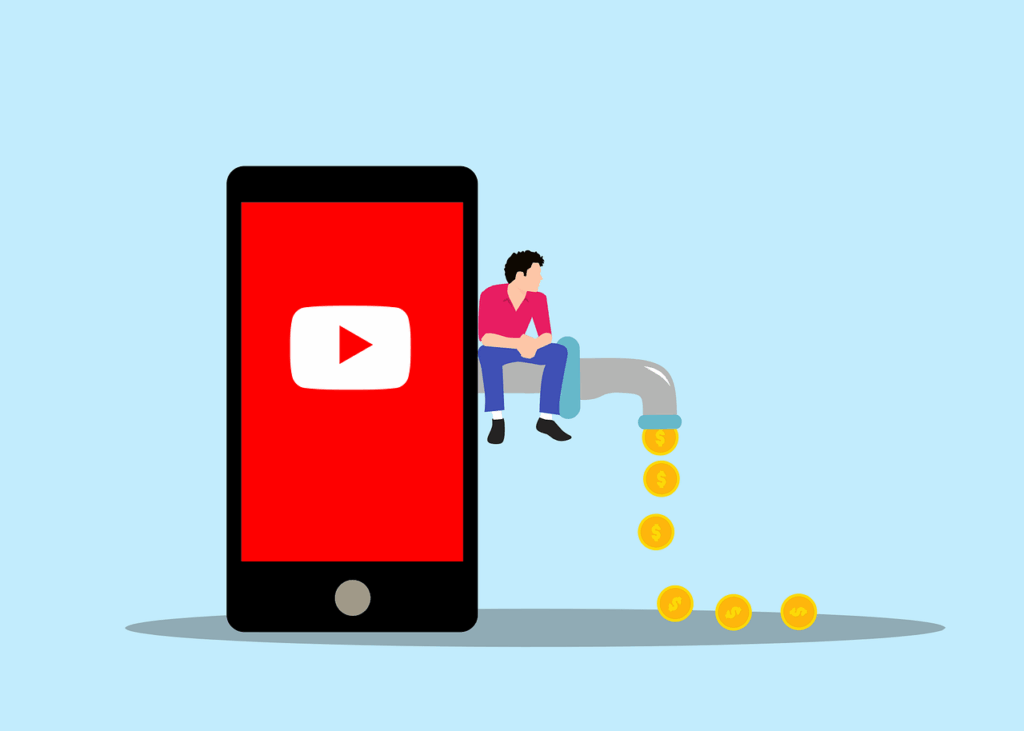
The promise of cord-cutting once gleamed as a beacon of financial freedom for consumers, offering an escape from the shackles of exorbitant monthly cable bills. The idea was simple and appealing: pay only for the channels and content you actually watch, streaming your favorite shows and movies online. However, as often happens in the rapidly evolving digital landscape, this dream has largely given way to a new, equally pervasive financial challenge known as ‘subscription creep.’ Instead of one large cable bill, consumers now face a fragmented array of charges for every piece of digital content, from blockbuster streaming services like Netflix, Disney+, and Paramount+, to music apps, workout platforms, digital comics, and video games.
This shift has not only complicated personal finance management but has also introduced a subtle yet significant drain on household budgets. Many popular originals and exclusive movie catalogs are locked behind separate paywalls, forcing consumers to subscribe to multiple services just to access the content they desire. What began as a cost-saving measure has, for many, evolved into an overwhelming collection of recurring payments that can quickly rival, or even exceed, the traditional cable bill it sought to replace. It begs a critical question for every household: Are you truly paying attention to where your money is going?
In an attempt to empower consumers, the FTC unveiled its ‘Click to Cancel’ rule in 2024, aiming to simplify the cancellation process and provide clarity on post-free trial charges. Regrettably, this consumer-friendly initiative was blocked by US courts in 2025, meaning the path to canceling unwanted subscriptions remains less straightforward than many would hope. Despite this setback, the onus is on consumers to vigilantly track and manage their subscriptions. Prices are constantly on the rise, and a small, easily missed bump in a monthly charge can significantly impact your annual spending. The good news is that with a proactive approach and the right strategies, you can regain control and protect your finances from the insidious effects of subscription overlap and creep.

1. **Understand ‘Subscription Creep’ and its Impact**’Subscription creep’ is a phenomenon that describes the gradual accumulation of recurring charges for various products and services, often without consumers realizing the full extent of their spending. It’s a stealthy drain on budgets, where individually low-cost subscriptions—for everything from streaming services and meal kits to fitness memberships and software—add up to significant monthly and annual expenses. Experts note that consumers often subscribe to services they use rarely or for a short time, then forget to cancel, leading to continued payments for abandoned products.
The system is designed for convenience in signing up, often with a simple click, and auto-renewals are ubiquitous. However, cancellation processes can be inconvenient and multi-step, incentivizing procrastination. This ease of entry combined with cancellation friction creates a perfect storm for budget strain. As Courtney Alev, a consumer financial advocate with Credit Karma, explains, ‘Subscription creep happens when you rack up a laundry list of subscriptions without realizing how much is actually being spent, which can lead to budget strain.’ Bola Sokunbi, the founder of Clever Girl Finance, adds, ‘Most subscriptions are low-cost upfront, which makes them easy to justify. Plus, they often start with free trials or limited-time discounts, so you sign up thinking you’ll cancel later. Life gets busy, and these little charges just slip under the radar.’
Beyond the financial toll, there’s a psychological impact known as ‘subscription fatigue.’ The sheer number of services consumers juggle can lead to decision paralysis, making the act of canceling feel daunting. This fatigue not only drains finances but can also foster a sense of losing control over spending. Chris Powell, head of checking and deposits at Citizens Bank, highlights the key downside: ‘when you’re no longer using a service but still paying for it, or you’ve lost track of just how many you have. Free trials turn into paid plans, charges hit different cards, and our spending is more fragmented than ever. A few forgotten charges can easily add up to hundreds each year.’ Recognizing this phenomenon is the first critical step toward regaining financial control and ensuring subscriptions work for you, not against you.
Read more about: 15 Mind-Blowing Box Office Secrets Hollywood Studios Hope You Never Discover
2. **Conduct Regular Subscription Audits**The most fundamental and arguably most crucial step in managing subscription creep is to regularly audit your subscriptions. This means taking dedicated time to identify every single recurring charge hitting your accounts. Many people don’t check their subscriptions regularly, making it easy for forgotten services and price hikes to go unnoticed. Bola Sokunbi advises, ‘Do a “subscription audit” every few months. Literally pull up your bank statement and highlight any recurring charges. Ask yourself, “Do I still use this? Is it worth it?”’
To conduct a thorough audit, begin by reviewing your credit card and bank statements for the last three to six months. Look for any recurring charges, even small ones, as these are the easiest to overlook. It’s important not to forget about subscriptions that charge annually, as these significant one-time yearly costs can also contribute substantially to your overall spending. Consider how much you’re spending on monthly charges over an entire year as well, to truly grasp their impact.
Beyond bank statements, check your app store accounts—Google Play for Android users and Apple App Store for iOS users—as many subscriptions are managed directly through these platforms. PayPal is another common platform where recurring payments might be set up. Additionally, several third-party apps and websites are designed to scan your accounts and list all your subscriptions automatically, which can significantly streamline this process. Once you have a comprehensive list, note down the service name, its monthly or annual cost, and, crucially, when you last used it. This inventory will serve as the basis for evaluating what stays and what goes, helping you trim services that no longer fit your life, as Alison Fyhrie, a financial advisor with Northwestern Mutual, suggests: ‘If a service hasn’t been used for some time, consider canceling. Worst case scenario, you realize that you do use it and can always rejoin.’
Read more about: Avoid These 12 Critical Mistakes When Investing in Early-Stage Startups: An Insider’s Guide
3. **Consolidate Payments to a Single Account/Card**Managing a multitude of subscriptions across various credit cards and bank accounts can quickly become a chaotic endeavor, making it incredibly difficult to keep tabs on your active subscriptions and overall spending. This fragmentation often contributes to subscription creep, as charges on different cards can easily slip under the radar. A strategic way to combat this is to consolidate your subscription payments to a single, dedicated account or credit card.
By centralizing your subscription billing, you create a clearer, more organized financial picture. As Chris Powell from Citizens Bank advises, ‘Consider consolidating your subscription payments to a single account. It makes tracking easier and gives you a clearer view of your budget. Awareness is the first step.’ This approach ensures that all your recurring charges appear on one statement, simplifying the audit process and making it much harder for forgotten subscriptions or unexpected price hikes to go unnoticed. When all your subscription activity is in one place, you can quickly identify what you’re paying for and assess its value.
Furthermore, using a consistent credit card for your subscriptions, and paying it off on time, can offer an additional benefit: it can help improve your credit and establish responsible credit use, as noted by Monique White, an accredited financial counselor and head of community at Self Financial. While the primary goal here is simplified tracking and cost control, the potential credit building aspect is a valuable byproduct. The key is to choose an account or card that you regularly monitor and that allows you to easily categorize and review these specific expenses. This single point of reference transforms a scattered mess of charges into a manageable, transparent overview of your subscription spending, empowering you to make informed decisions about each service.
4. **Implement Mindfulness Strategies for New Sign-ups**The ease of signing up for new subscriptions is a double-edged sword; while convenient, it often bypasses thoughtful financial consideration, leading to impulse additions to your growing list of recurring payments. To prevent future ‘subscription creep,’ it’s crucial to inject a dose of mindfulness into your decision-making process before committing to any new service. Rod Griffin, senior director of public education and advocacy at Experian, emphasizes this point: ‘A few dollars a month may not seem like much, but when multiplied by numerous subscriptions, it can add up to hundreds of dollars a year on services you might not be using.’
Before clicking that enticing ‘subscribe’ button, take a moment to pause and evaluate. Ask yourself if the service is a genuine ‘need’ or merely a ‘want,’ and critically assess whether it truly aligns with your financial goals and current budget. Consider the alternative uses for that money—could it be better spent on paying down debt, bolstering your savings, or investing for your future? Bola Sokunbi highlights that ‘It’s not about being irresponsible ― it’s just how the system is designed: convenient to sign up, inconvenient to cancel.’ Breaking this cycle requires intentional friction at the point of entry.
One highly effective mindfulness strategy is the ’24-hour rule.’ As Courtney Alev suggests, ‘Consider establishing a “24-hour rule,” where you wait for at least one day before deciding to sign up for a new subscription.’ This waiting period allows emotions to subside and rational thought to prevail, often revealing that the initial impulse wasn’t a genuine necessity. Another practical tip is to delete any saved credit card numbers from your browser or device, forcing you to manually input payment details for each new sign-up. This added step, however minor, introduces enough friction to deter casual subscriptions, encouraging you to truly reflect on whether the service is worth the effort and the recurring cost. By making new subscriptions harder to acquire, you cultivate a more deliberate and financially responsible approach to your digital consumption.

5. **Set Alerts and Spending Limits**Actively monitoring your spending is a powerful defense against subscription creep, and leveraging technology to set alerts and spending limits can provide crucial real-time oversight. Many banks and financial management tools offer features designed to keep you informed about your financial activities, particularly recurring expenses. It’s significantly harder to ignore subscription creep when the mounting costs are consistently brought to your attention.
For instance, Chris Powell from Citizens Bank points out that ‘Citizens customers can use the app’s Spending Insights tool to see how recurring expenses fit into their overall cash flow and set alerts.’ This capability allows you to establish thresholds for specific spending categories or for all recurring payments. When you approach or exceed these limits, you receive an immediate notification, prompting you to review your subscriptions and make necessary adjustments. This proactive monitoring ensures you stay within your allocated budget and prevents any single subscription, or the collective total, from quietly spiraling out of control.
Beyond general spending limits, pay close attention to alerts about cost changes for existing subscriptions. Service providers often communicate price increases via email, which can easily be overlooked amidst a flood of other messages. Anel Andrew, an insolvency practitioner at MoneyPlus, advises, ‘Watch out for emails about price increases. Regularly search your email inbox for keywords like “subscription” or “renewal” so price rises and auto-renewals don’t go unnoticed.’ By leveraging your bank’s mobile system, dedicated financial apps, and even simple email filters, you can create a robust system of reminders and notifications that keep you firmly in control of your subscription expenses, ensuring you’re never caught off guard by unexpected charges or escalating costs.
Read more about: Mastering Your Money: Essential Budgeting Strategies for Car Ownership and Financial Peace in Retirement
6. **Master Free Trials: Don’t Let Them Trap You**Free trials are a common marketing tactic, offering a taste of a service with the promise of no immediate financial commitment. While seemingly innocuous, they are a notorious trapdoor for subscription creep, designed to convert casual interest into recurring charges through consumer forgetfulness. Many free trials automatically roll into paid subscriptions once the trial period ends, especially when linked to autopay, catching consumers off guard. As Monique White observes, ‘But it’s also really easy to forget to cancel at the end of the trial period ― particularly if you’re using autopay.’
The key to mastering free trials is proactive management and vigilance. The moment you sign up for a free trial, immediately set a clear reminder in your calendar or on your phone for a few days before the trial is scheduled to end. This crucial buffer period gives you ample time to evaluate the service and decide whether it truly adds enough value to your life to justify a paid subscription. Jack Howard, head of money wellness at Ally, advises, ‘Set a calendar reminder a few days before the trial ends to give yourself time to evaluate whether the service is worth keeping. If not, you can cancel before you’re billed.’
Should you decide the service isn’t worth keeping, cancel it promptly before the billing date. Even after canceling, make it a habit to double-check your bank or credit card statement to confirm that no charges were processed post-cancellation. The absence of an immediate charge does not always guarantee a successful cancellation, as system delays or errors can occur. By adopting this disciplined approach—setting reminders, evaluating critically, and verifying cancellations—you can fully leverage the benefits of free trials without falling victim to the sneaky, unintended charges that often follow, transforming a potential financial leak into a genuine opportunity to test services without risk.

7. **Leverage Dedicated Subscription Management Apps**In our digital world, tracking every recurring charge can feel impossible. Fortunately, a growing ecosystem of third-party apps and websites helps consumers navigate the labyrinth of subscriptions. While adding another service might seem counterintuitive, many powerful tools offer free basic versions, significantly streamlining financial oversight. They act as a central dashboard, consolidating recurring payments into one digestible view.
These specialized applications go beyond simple tracking, providing proactive alerts and insights for informed decisions. Many automatically scan financial accounts to identify recurring transactions, alerting you to upcoming charges, price increases, or cancellation opportunities. Some even offer direct cancellation features or negotiation assistance, saving time with customer service. By automating much of the legwork, these apps make subscription management manageable.
Apps like **Bobby** (iOS) allow manual input, track billing dates, offer security features like Touch ID, support multiple currencies, and provide payment reminders. **Hiatus** (Android, iOS) tracks bills, alerts to charges/increases, monitors spending, and with Premium, offers bill negotiation and cancellation. **PocketGuard** (Android, iOS) tracks expenses, shows available spending money, and its Plus version enables custom categories for services like video-streaming.
Other robust options include **Rocket Money** (Android, iOS, web), formerly Truebill, which identifies recurring transactions, tracks free trials, and cancels unwanted subscriptions for premium users. **Quicken Simplifi** (Android, iOS, web) offers a “fresh, unique approach” to personal finance, tracking and separating bills from subscriptions, alongside alerts for unusual charges. **Sortbilly** (Android, iOS, web), in open beta, provides a dashboard for active/expired subscriptions, upcoming payments, spending stats, and daily/weekly email notifications. **Subby** (Android) is free for basic manual input, offering bill date notifications. **TrackMySubs** (web), viable for consumers, tracks up to 10 subscriptions for free, offering calendar views and graphs. **Trim** (web) identifies and cancels unwanted services, negotiates bills, and automates savings. These tools offer a powerful defense against subscription creep.
Read more about: Mastering Your Money: Essential Budgeting Strategies for Car Ownership and Financial Peace in Retirement
8. **Harness Direct App Store Management Tools**While third-party apps offer comprehensive oversight, many consumers overlook powerful, built-in subscription management features directly within smartphone app stores. For services subscribed through Google Play (Android) or Apple App Store (iOS), managing payments is often a few taps away. This direct access provides a straightforward, secure method for reviewing, pausing, or canceling subscriptions, empowering control from your device.
For Android users, managing Google Play subscriptions is intuitive. Open the Google Play app, tap your profile, then navigate to “Payments & subscriptions” > “Subscriptions.” Select the service to manage. The platform offers clear options to “Cancel subscription” if no longer needed, or “Manage > Pause payments” for a temporary hold. This direct interface ensures you pay only for active services.
Apple offers a seamless experience for iOS users to manage App Store subscriptions. Access settings via the App Store app (profile > “Subscriptions”) or through “Settings” (your name > “Subscriptions”). Active subscriptions can be sorted by name, price, or renewal date for quick review. Tapping a subscription reveals details, including a “Cancel Subscription” option. Utilizing these native tools ensures charges from apps downloaded via these stores remain under your watchful eye.
Read more about: Navigating Market Volatility: Identifying Risky Platforms and Building a Resilient Portfolio Before the Next Crash

9. **Eliminate Redundant Subscriptions**Redundant services are a sneaky drain on your wallet—paying for multiple platforms offering the same content or utility. In efforts to access desirable content or cover all bases, consumers inadvertently sign up for overlapping services. This leads to unnecessary spending without proportional value increase, prevalent in streaming, fitness, and food delivery sectors, where options easily lead to duplication.
A critical step in optimizing spending is to identify and eliminate redundancies. Jack Howard, Ally’s head of money wellness, advises: “See if you have redundant subscriptions. Subscription creep often happens when you subscribe to services that overlap, like multiple streaming services or workout classes. This can lead to unnecessary spending without increasing personal value.” The goal is to consolidate spending by choosing one or two services that best meet your needs, rather than scattering your budget.
To tackle this, revisit your subscription list from audits and categorize by type. Are you paying for two movie streaming services when one suffices? Do you need both DashPass and UberOne? As Janelle Sallenave of Chime suggests, “If you’re paying for multiple food delivery services like DashPass and UberOne, ask yourself if you really need both or if one will do the trick.” Before any new sign-up, check for similar offerings to prevent new overlaps. Being selective and consolidating frees up funds without missing essential services.
Read more about: Read This First: These 11 Common Smart Home Gadgets Become Costly Money Pits Once They Hit Year Two.

10. **Explore Bundle Options and Annual Savings**After streamlining subscriptions, optimize the essential services you keep. Smart consumers know clever ways to lower prices without sacrificing quality. Two powerful strategies are leveraging bundled services and opting for annual payment plans. Both lead to substantial savings over time, contributing significantly to your financial wellness by making beloved subscriptions more cost-effective.
Bundled services are increasingly common, offering multiple features or complementary products under a single, discounted subscription. Alison Fyhrie recommends, “Opt for bundled services that offer multiple features under one subscription. This can help reduce costs and, in the long run, help you save money.” Telecom companies bundle internet, TV, and phone, while media conglomerates combine streaming platforms at reduced rates. Many credit cards and retailers also provide free monthly subscriptions (e.g., grocery delivery, ad-free streaming) when you link accounts. Check your existing card benefits and loyalty programs for these overlooked advantages.
Another highly effective saving method is switching from monthly to annual payment plans for long-term services. Anel Andrew notes, “paying annually, rather than monthly, often saves money.” Companies incentivize annual commitments with significant discounts, typically 10-20% off the yearly cost. While a larger upfront payment is required, cumulative savings are considerable. Also, consider family or group plans, which can dramatically lower per-person costs, making premium services more accessible. Seek out bundle opportunities and annual payments to keep essential subscriptions cost-effective.
Read more about: Navigating the Tire Market: 15 Essential Tips to Secure the Best Price and Maximize Value for Your Next Set of Tires
11. **Build and Stick to a Subscription Budget**Effective long-term financial management for subscriptions relies on establishing a dedicated budget and committing to it. Without a clear spending ceiling, even diligent audits can be undermined by new impulse sign-ups. A subscription budget brings intentionality to your spending, ensuring expenses align with broader financial goals and don’t quietly consume funds meant for savings, debt repayment, or other essential needs.
Monique White, an accredited financial counselor, emphasizes this foundational step: “As you are building your budget, account for all subscriptions. For budgeting purposes, I recommend multiplying each monthly subscription cost by 12 ― this annual view will make it clear how much you’re truly spending, and help you determine whether or not it fits in your budget.” This annual perspective reveals the true impact of small monthly fees, aiding prioritization. She suggests the 50/30/20 budget (50% needs, 30% wants, 20% debt/savings) to integrate subscriptions under ‘wants.’
Proactively allocate a specific amount, say $50 monthly, and stick to it. This means prioritizing valued services and making conscious trade-offs. If a new streaming service launches, pause or cancel another to stay within budget. Chris Powell of Citizens Bank suggests approaches like the envelope budget method, “involving allocating specific amounts to categories like entertainment, subscriptions, or dining out, helping you stay intentional and avoid impulse spending.” Treating subscriptions as a distinct budget and regularly reviewing spending transforms passive consumption into active, controlled financial decisions, safeguarding money from subscription creep.
Read more about: Mastering Your Money: Essential Budgeting Strategies for Car Ownership and Financial Peace in Retirement

12. **Address the Psychological Triggers of Spending**Beyond tracking and canceling, combating subscription creep requires understanding the psychological reasons we subscribe. Subscriptions offer more than content; they provide comfort, belonging, or a temporary mood boost, especially during stress. Recognizing these emotional drivers is key to making choices aligned with financial goals, avoiding fleeting impulses that can lead to unnecessary spending.
Jack Howard from Ally notes, “Subscriptions can offer comfort and convenience, especially in times of stress. People may sign up for streaming services, meal kits or other subscriptions as a way to cope with emotional challenges. While the act of subscribing to new services can provide a temporary mood boost, similar to retail therapy, it’s just that ― temporary.” This emotional connection makes cancellation harder, even for rarely used services. The dopamine hit or FOMO can override rational planning, persistently draining your budget.
To gain mastery, delve into the psychological triggers driving your sign-ups and renewals. Are you subscribing from boredom, social pressure, or instant gratification? Awareness of these patterns helps develop healthier coping and decision-making. Howard advises, “Dig into the psychological triggers that drive your subscription sign-ups and renewals to help make choices that align with your financial goals.” Self-awareness differentiates genuine needs from emotionally driven wants, empowering mindful choices that support financial well-being and peace of mind. Ultimately, controlling subscriptions means controlling your financial narrative.
Read more about: Beyond the Bikini: Navigating Modesty, Family Expectations, and Dress Codes for Inclusive Bachelorette Celebrations
In the modern digital economy, subscriptions are an undeniable part of life, offering convenience and essential services. However, as explored, their cumulative effect can silently erode financial health, transforming convenience into constraint. By embracing proactive strategies—leveraging smart management tools, eliminating redundancies, building a robust budget, and understanding your spending psychology—you can transform from a passive consumer into an empowered financial manager. Remember, your money should work for you. Take these steps to reclaim control, ensure every dollar provides genuine value, and enjoy the peace of mind of a well-managed financial life.









